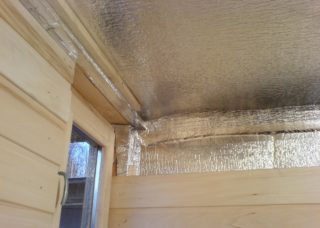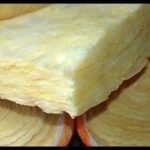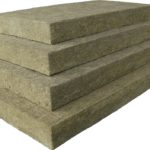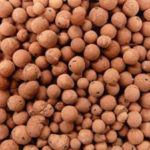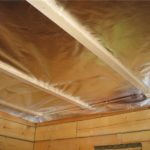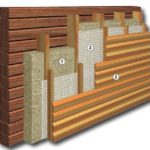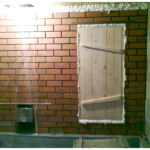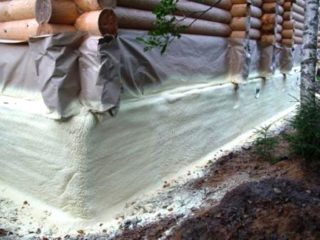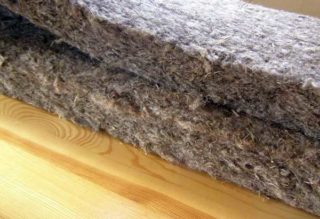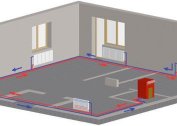High-quality insulation of the bath from the inside is a responsible procedure, included in the list of works on the internal protection of the building. If it is not given due attention, when operating a bathhouse to heat a steam room, significantly more costs will be required. In the case of poor-quality insulation, when taking bath procedures, it will not be possible to obtain a sufficiently high temperature.
The choice of material for insulation of the bath
Choosing the right insulation for the bath is especially important. The market offers a wide range of thermal insulation materials used for warming various designs, but not everyone is suitable for a steam room, where humidity and temperature reach values critical for most known protective coatings. To determine which insulation for a bath on the walls inside is better, you need to familiarize yourself with the following list:
- expanded clay;
- glass wool;
- basalt cotton wool.
- Glass wool
- Stone wool
- Expanded clay
The use of polystyrene for the stated purposes is not recommended, since at high temperatures it begins to release substances harmful to human health.
Expanded clay is optimal for insulation of bath floors. The flowability of the insulating material guarantees a good filling of wooden and concrete substrates. It can also be used in reinforced concrete floors pretreated with cement screed.
Mineral wool and similar heat insulators are used to insulate walls and ceilings. The most effective is a heat insulator based on stone (basalt) wool, equipped with a special coating in the form of a reflective foil.
Inside insulation schemes
To reliably insulate the bath from the inside and protect the internal surfaces, you need to prepare the base and the material itself. The general scheme of installation of insulation in the bath rooms:
- With the help of the selected heat insulator, the ceiling is finished, and then they are transferred to the walls.
- At the end of these procedures, they begin to insulate the floor.
- At the final stage, the doors of the steam room and the entire structure are finished with heat-insulating material.
- If necessary, insulation is carried out from the outside.
- Stage 1 - ceiling
- Stage 2 - walls
- Stage 3 - doors and floor
When warming the individual components of the bath, various schemes are used. They differ for floors, walls and ceilings and may have some nuances that must be taken into account when carrying out insulation work.
DIY warming instruction
Thermal insulation of floor and ceiling
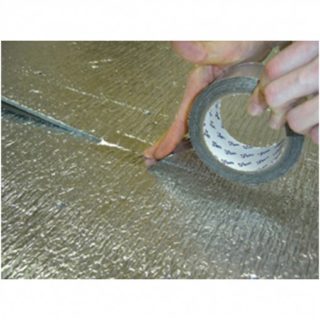
Work on the insulation of ceiling surfaces is carried out in the following order:
- The plane is covered with sheets of roll paper, stacked with the formation of overlappings (overlap) and subsequent fixation in a convenient way.
- The ceiling with paper is closed with pre-prepared mats of insulation material, laid tightly butt.
- A special foil is mounted on top, fixed by means of masking tape. For its fastening together with the heat insulator it is recommended to use wooden slats stuffed along the edges of the insulation plates.
During installation, it is necessary to ensure that a continuous coating is formed without gaps and seams. It is important to maintain the tightness of the waterproofing, in case of violation of which steam will start to enter the heat-insulating material. In this case, deformation ("subsidence") of rolled mats and a significant deterioration in the protective properties are possible.
The wooden blocks used for attaching the heat-insulating layer serve as the basis for stuffing the finish, in which only wood materials are used. With their help, it is possible to achieve a useful effect from the resinous substances released during strong heating. A good result is obtained if widespread and inexpensive types of wood are used for covering the ceiling: linden or aspen.
The sequence of operations to protect the floor looks a little different. For brick buildings, it looks like this:
- The base is being prepared: cement screed on concrete or wooden flooring from boards.
- A waterproofing layer is arranged in the form of a polyethylene film that reliably protects the base from the formation of fungi and decay.
- Sheets of thick paper are laid to protect the room from unwanted odors from the underground.
- On top of waterproofing and paper, a frame based on wooden blocks is arranged.
- Expanded clay is poured into the formed niches or sheets of mineral wool are laid.
- Another layer of waterproofing is laid on the insulation material.
At the final stage of work, another skeleton frame is made on top of the formed “pie”, on which the final coating is covered with well-trimmed boards.
Walls
As the wall insulation for baths, the same materials are used as for the ceiling. Operations for their protection begin with the calculation and temporary fixation of the blanks of the rolled heat insulator. After laying them on top, a wooden frame made of timber is arranged on which a foil 65-70 mm thick is lined. The order of its coverings and fastenings is the same as for the ceiling surface. The main task is to ensure the required level of tightness.
To finish the insulated walls of the frame bath, it is preferable to use a lining, which, if desired, can be used for the ceiling. In this case, you need to be prepared for significant costs associated with high-quality finish of these structural elements.
Foundation
When warming a foundation made of gas silicate billets or other material in need of protection, special attention is paid to the joint zones of individual blocks. In these places, the formation of cold bridges is possible, requiring mandatory protection.
Before warming the butt areas of the foundation on the basis of foam blocks, you should first process all the weaknesses with bitumen mastic. After that, they start gluing heat-insulating material on them (foam or polyurethane boards), the thickness of which is selected at least 150 mm. The basement part of the bathhouse made of brick protruding from the soil can be insulated with the same loose expanded clay. Previously, on the basis of floor slabs, a screed of liquid expanded clay concrete is made, which slightly improves thermal insulation.
In addition to these materials, Rockwell boards are often used to protect this part of the structure. When the foundation foundations are insulated externally, they are usually mounted on modern Facade Butts panels.
Door insulation
Felt material is used to insulate the doors to the steam room and the bath room. The advantages of such a heater include low cost and quite acceptable efficiency, especially if used in combination with other heat insulators. Foamed polyethylene or ecowool, which is recommended to be placed on the inside of the door leaf, is suitable for this.
The order of work is as follows:
- Before placing felt and slabs of the selected thermal insulation, a frame of thin rails is packed on the surface to be protected.
- In the formed niches, workpieces cut by their size are laid.
- Over a layer of insulation about 40 mm thick sheets of moisture-proof plywood are packed.
The coating formed as a result of these actions guarantees protection against the penetration of cold into the bathhouse and the steam room through the doors.
To increase the efficiency of thermal insulation of internal spaces, it is recommended to additionally fill a layer of felt on the outside of the door.
Important points
Before warming the bathhouse with your own hands, you will need to familiarize yourself with the features of the procedures carried out at the same time and pay attention to the following points:
- the insulation for the sauna and similar objects should have a minimum hygroscopicity indicator (absorb moisture poorly);
- usually a heat insulator is selected from a number of non-combustible materials;
- when preparing a wooden log house for the future bath, you should consider the issue of its external insulation.
The choice of a suitable insulation depends on the material of the walls, floors, ceiling and foundation of the bath.
